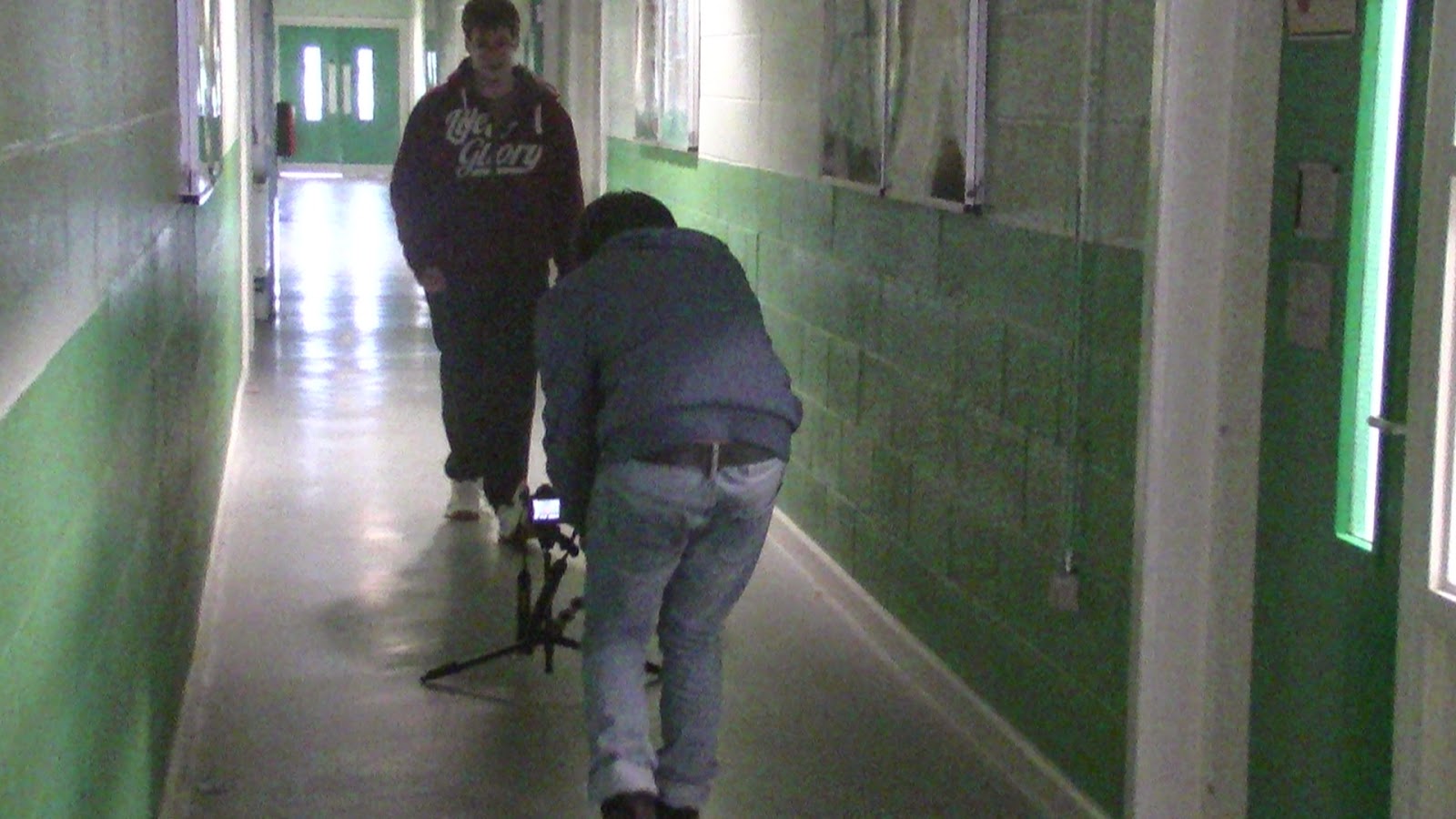We began our lighting practice and we took a few pictures to show certain light reflections and how it showed the mood of the person. We also shared the camera around so the different people in our group had a chance at using the camera.
Firstly we used artificial light looking upwards at Andreas to show the mood of possible confusion or sadness, this is shown by the light focusing more on his mouth and above his eyes where sadness is shown most on the face.
We also took the shot from above to make Andreas look more intimidated as the light is shown more when the photo was taken at a higher angle.
We used two artificial lights for this picture of Max, one was placed on the left part of his body and one was placed above his head but to the left to make the whole left part of his head brighter than the right side. This is shown to make Max look happy, as the light shines on his smile and it makes him show a curious/happy face.
We also took this shot from above to make the light show more and that Max shows a larger smile when his head is leaning backwards to make him look upwards. In addition to this, we used the high angle shot to show Max's glasses reflect a shadow onto his face which show a good effect of making his face look secretive.

The use of sideways light is also useful in showing a sinister expression shown in the photo of Brad. Again, we used artificial light in the photo, one light was placed to the left of Brads face showing one half and the other light was placed to the right of his head lighting up the background to make the other half of Brads face darker and to contrast the light.
This is used to create binary opposites in where the dark and the light meet and to create an effect to make Brad look more evil and to make the audience believe (or think) that he is a protagonist just by using the light and his facial expression.
In this photo of Me, we used the natural light seeping through from behind the blinds to attempt to make an effect. There was one artificial light placed next to the camera aiming at me but in this photo it did not come out in a good quality.
The light from behind is supposed to show that there could be something else in the shot to look at apart from my head. This is useful to make multiple things happen at once during the shot.
In this image, we used the natural light in the room to make Andreas' head stand out to the background. Even though the light in the background is fairly similar to Andreas' head, it makes Andreas' head stand out as it makes his hair brighter.
In this photo of Brad, we used the light created from the ceiling lights in the room to make Brad look intimidating, this is shown by the low angle shot but in addition the light shining down on him makes the front part of his body slightly darker which could also show how he could be an antagonist and how evil he will look when the light is shown making him darker from the front.
I got bored at home again and like usual, Max was able to give me a perfect facial expression to create an amazing picture.

When I was walking home the other day I took a picture with the deep fog that was present. This made the picture effective and if fog is a frequent weather problem then our group could possibly use the fog to our advantage to make lighting more significant and to give the opening a darker feel and a colder atmosphere.
This lighting practice has helped us for when we film our thriller opening. The use of lighting is very important for when the film is being produced as it is used to connote dark emotions with the aim of using low key colours, with the addition of post-production tools such as the hue, saturation & colour it means we can manipulate the dark emotion connoted from the opening. With the use of graphic matches and light comparisons, we can make sure the transitions between clips are also correct and fit the continuity of the opening.




















.jpg)




























